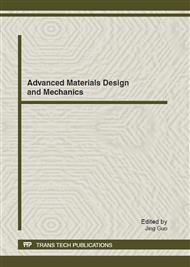p.297
p.301
p.305
p.311
p.316
p.320
p.324
p.328
p.335
The Integration of Taguchi Method and FAHP Method to Improve the SMT Solder Paste Printing Thickness Processing Capability
Abstract:
In response to the trend of miniaturization of electronic components, SMT (Surface Mount Technology) technology is become increasingly important. According to statistics, more than 70% of SMT defects occur in the solder paste printing process; hence, provided the solder paste printing process is completed correctly, the SMT yield can be maintained at a certain level. The solder paste printing process is the core of SMT technology; inability to control the process parameters may easily lead to poor solder results, which reduce product quality and increases production costs. By integrating the Taguchi and FAHP (Fuzzy Analytic Hierarchy Process) methods, this study attempted to obtain the solder thickness Cpk optimal parameters and apply DOE (Design of Experiments) in experimentation to determine the optimum SMT solder thickness parameter combination for process engineers to rapidly implement and control the SMT solder thickness process according to the optimal SMT process parameters. The empirical results suggested that, the SMT solder printing thickness processing capability Cpk value has been improved from 0.58 to 1.47, which could improve the quality of relevant electronic products.
Info:
Periodical:
Pages:
316-319
Citation:
Online since:
September 2012
Authors:
Keywords:
Price:
Сopyright:
© 2012 Trans Tech Publications Ltd. All Rights Reserved
Share:
Citation:


